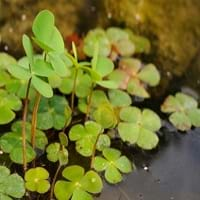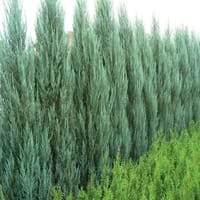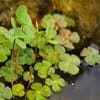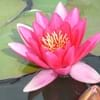Life Span
Perennial
Perennial
Type
Aquatics
Needled or Scaled Evergreen
Origin
Australia
Hybrid origin, North America
Types
Marsilea quadrifolia, Marsilea hirsuta
Not Available
Habitat
Bog Garden, Cultivated Beds
Cold Regions, Dry areas, Dry Forest
USDA Hardiness Zone
9-11
3-7
Sunset Zone
21,22
1a, 1b, 2a, 2b, 3a, 3b, 5, 6, 7, 8, 9, 10, 11, 12, 13, 14, 15, 16, 17, 18, 19, 20, 21, 22, 23, 24
Habit
Mat-forming
Pyramidal
Flower Color
Not Available
Non Flowering Plant
Flower Color Modifier
Not Available
Bicolor
Fruit Color
Non Fruiting Plant
Blue
Leaf Color in Spring
Green, Light Green
Green
Leaf Color in Summer
Green, Light Green
Green
Leaf Color in Fall
Green
Green
Leaf Color in Winter
Green
Green
Leaf Shape
Four wedge-shaped leaflets
Acicular
Plant Season
Spring, Summer, Fall, Winter
Spring, Summer, Fall
Sunlight
Full Sun, Partial Sun
Full Sun
Type of Soil
Loam, Sand
Clay, Loam, Sand
The pH of Soil
Acidic, Neutral
Acidic, Neutral, Alkaline
Soil Drainage
Poorly Drained
Well drained
Bloom Time
Not Available
Spring
Tolerances
Wet Site
Drought
Where to Plant?
Container, Ground, Pot
Ground
How to Plant?
Spores
stem tip cuttings, Tip cutting
Plant Maintenance
Medium
Medium
Watering Requirements
Needs very little water
Average Water Needs, Do not water frequently
In Summer
Lots of watering
Lots of watering
In Spring
Moderate
Moderate
In Winter
Average Water
Average Water
Soil pH
Acidic, Neutral
Acidic, Neutral, Alkaline
Soil Type
Loam, Sand
Clay, Loam, Sand
Soil Drainage Capacity
Poorly Drained
Well drained
Sun Exposure
Full Sun, Partial Sun
Full Sun
Pruning
Remove damaged leaves, Remove dead branches, Remove dead leaves
Remove damaged leaves, Remove dead branches, Remove dead leaves
Fertilizers
Organic Manure
All-Purpose Liquid Fertilizer
Pests and Diseases
Aphids, Clover Clot
Red blotch
Plant Tolerance
Drought
Drought
Flowers
None
Insignificant
Flower Petal Number
Not Available
Single
Fragrant Fruit
Not Available
No
Fragrant Bark/Stem
No
Yes
Foliage Texture
Medium
Medium
Foliage Sheen
Matte
Not Available
Attracts
Frogs
Aphids, Early/Late Blight
Allergy
Beriberi, Toxic
Not Available
Aesthetic Uses
Ground Cover
Not Used For Aesthetic Purpose
Beauty Benefits
Not Available
Not Available
Environmental Uses
Fixes Nitrogen
Air purification
Medicinal Uses
Astringent
Cold, Cough, Laxative
Part of Plant Used
Seeds, Spores
Shoots, Stem
Other Uses
Used like flour, Used to make dough
Not Available
Used As Indoor Plant
Yes
No
Used As Outdoor Plant
Yes
Yes
Garden Design
Container, Houseplant, Tropical, Water Gardens
Foundation, Hedges, Mixed Border, Rock Garden, Wall, Screening, Wind Break
Botanical Name
MARSILEA drummondii
JUNIPERUS scopulorum 'Cologreen'
Common Name
Common Nardoo, Pepperwort, Water Clover
Rocky Mountain juniper
In Hindi
Water Clover
Juniperus scopulorum
In German
Wasser Klee
Juniperus scopulorum
In French
Eau Clover
Juniperus scopulorum
In Spanish
Agua trébol
Juniperus scopulorum
In Greek
νερό Clover
Juniperus scopulorum
In Portuguese
Clover água
Juniperus scopulorum
In Polish
Woda Clover
Juniperus scopulorum
In Latin
Trifolium aqua
Juniperus scopulorum
Phylum
Pteridophyta
Tracheophyta
Class
Filicopsida
Pinopsida
Order
Hydropteridales
Pinales
Family
Marsileaceae
Cupressaceae
Clade
Not Available
Not Available
Tribe
Not Available
Not Available
Subfamily
Not Available
Not Available
Number of Species
Not Available
Properties of Water Clover and Juniperus scopulorum
Wondering what are the properties of Water Clover and Juniperus scopulorum? We provide you with everything About Water Clover and Juniperus scopulorum. Water Clover doesn't have thorns and Juniperus scopulorum doesn't have thorns. Also Water Clover does not have fragrant flowers. Water Clover has allergic reactions like Beriberi and Toxic and Juniperus scopulorum has allergic reactions like Beriberi and Toxic. Compare all the properties and characteristics of these two plants. Find out which of these plant can be used as indoor plant. If you are interested to decorate your house and garden, find out aesthetic uses, compare them and select the plant which will beautify your surrounding. Along with beautification, try comparing medicinal and edible uses of Water Clover and Juniperus scopulorum and you can choose the plant having best and most benefits.
Season and Care of Water Clover and Juniperus scopulorum
Season and care of Water Clover and Juniperus scopulorum is important to know. While considering everything about Water Clover and Juniperus scopulorum Care, growing season is an essential factor. Water Clover season is Spring, Summer, Fall and Winter and Juniperus scopulorum season is Spring, Summer, Fall and Winter. The type of soil for Water Clover is Loam, Sand and for Juniperus scopulorum is Clay, Loam, Sand while the PH of soil for Water Clover is Acidic, Neutral and for Juniperus scopulorum is Acidic, Neutral, Alkaline.
Water Clover and Juniperus scopulorum Physical Information
Water Clover and Juniperus scopulorum physical information is very important for comparison. Water Clover height is 10.20 cm and width 30.00 cm whereas Juniperus scopulorum height is 460.00 cm and width 150.00 cm. The color specification of Water Clover and Juniperus scopulorum are as follows:
Water Clover flower color: Not Available
Water Clover leaf color: Green and Light Green
Juniperus scopulorum flower color: Non Flowering Plant
- Juniperus scopulorum leaf color: Green
Care of Water Clover and Juniperus scopulorum
Care of Water Clover and Juniperus scopulorum include pruning, fertilizers, watering etc. Water Clover pruning is done Remove damaged leaves, Remove dead branches and Remove dead leaves and Juniperus scopulorum pruning is done Remove damaged leaves, Remove dead branches and Remove dead leaves. In summer Water Clover needs Lots of watering and in winter, it needs Average Water. Whereas, in summer Juniperus scopulorum needs Lots of watering and in winter, it needs Average Water.





